Is AI Killing Contact Centers? I Don’t Think So!

Gartner once stated that 89% of businesses will compete mainly on customer experience—and I completely resonate with this sentiment.
Customer experience is the cornerstone of the contact center industry. Yet, as customer expectations evolve—driven by age, cultural differences, and industry-specific needs—it becomes clear that providing an ideal customer experience is far from a one-size-fits-all solution.
The contact center industry has always been a powerhouse of evolution, but in recent years, the speed of change has been exponential - thanks to Generative AI (GenAI). Now, everyone is gearing up so they don’t miss the bus. As a regular attendee at the Customer Contact Week (CCW), I’ve witnessed firsthand how CEOs and industry leaders are rolling up their sleeves to understand how GenAI will impact the sector. Some AI evangelists even predict that automation will soon doom the outsourcing industry—potentially displacing millions of agents across countries like India, the Philippines, Mexico, and Brazil.
As someone who’s built a combined enterprise value of over a billion dollars over the last seven years—with my startups Observe.AI, Sanas, and investments through Carya Venture Partners—I often get asked my opinion on the future of AI and the contact center industry. My answer?
I think that there’s a future where augmentation and automation would coexist. Humans can’t be shown the door in an industry that requires human interactions. Yes, there can be a day when AI can match humans on empathy and can solve complex decision trees, but that’s pretty far from now. And even in that scenario, the majority of the humans would need to interact with humans for customer support.
Here’s why.
1. The Sectors Where Human Interaction Is a Must
Sensitive sectors like financial and customer services account for 50% of total outsourcing volumes. These are industries where customers don’t just expect quick answers to basic queries like credit card activation or insurance coverage—they often demand urgent, human-led assistance.
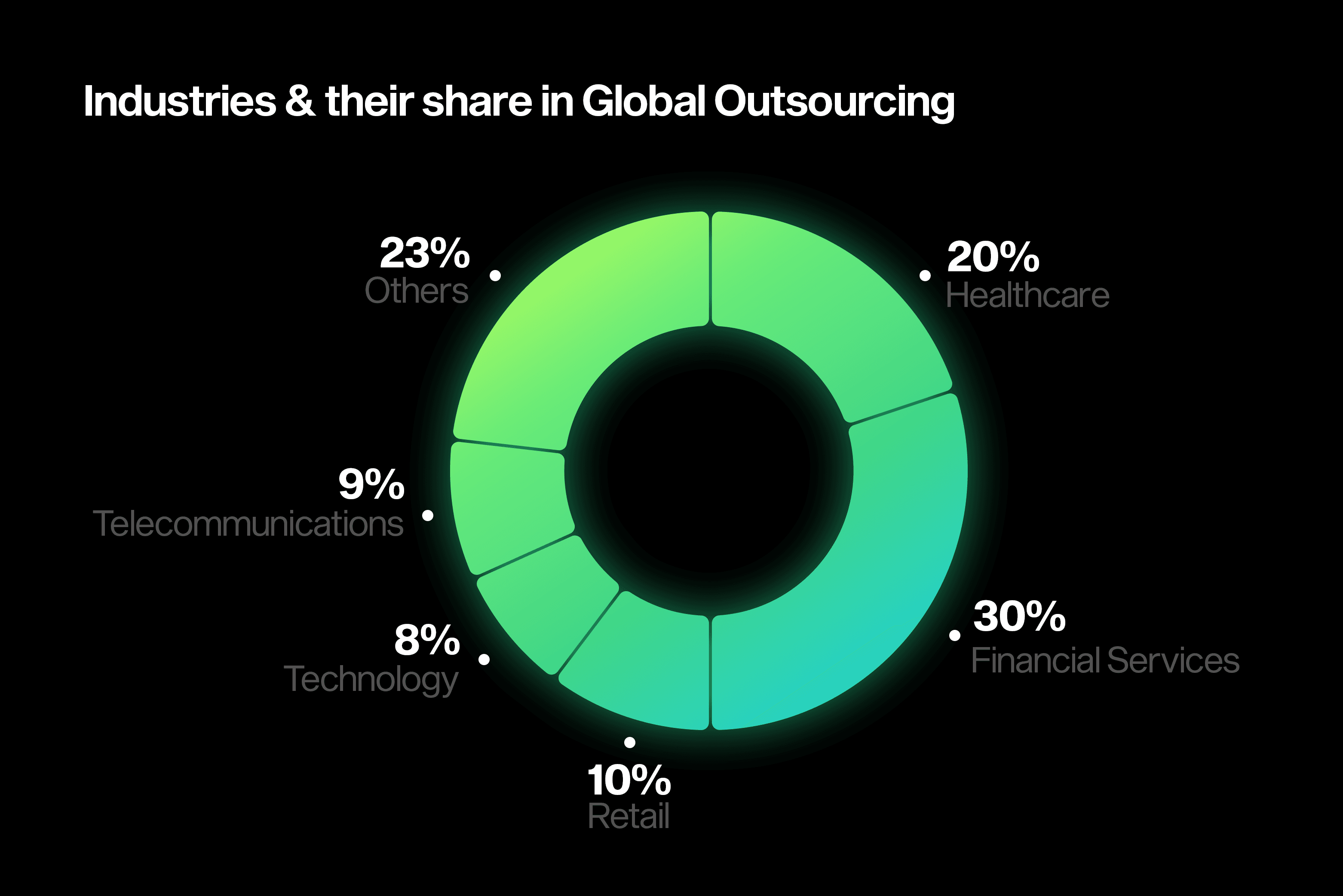
While it’s true that some startups in less sensitive domains have laid off their customer support teams in favor of automation, the financial services and healthcare sectors are far from ready for a fully automated customer experience. In these industries, the human element is critical for building trust, solving complex problems, and providing emotional reassurance when it matters most.
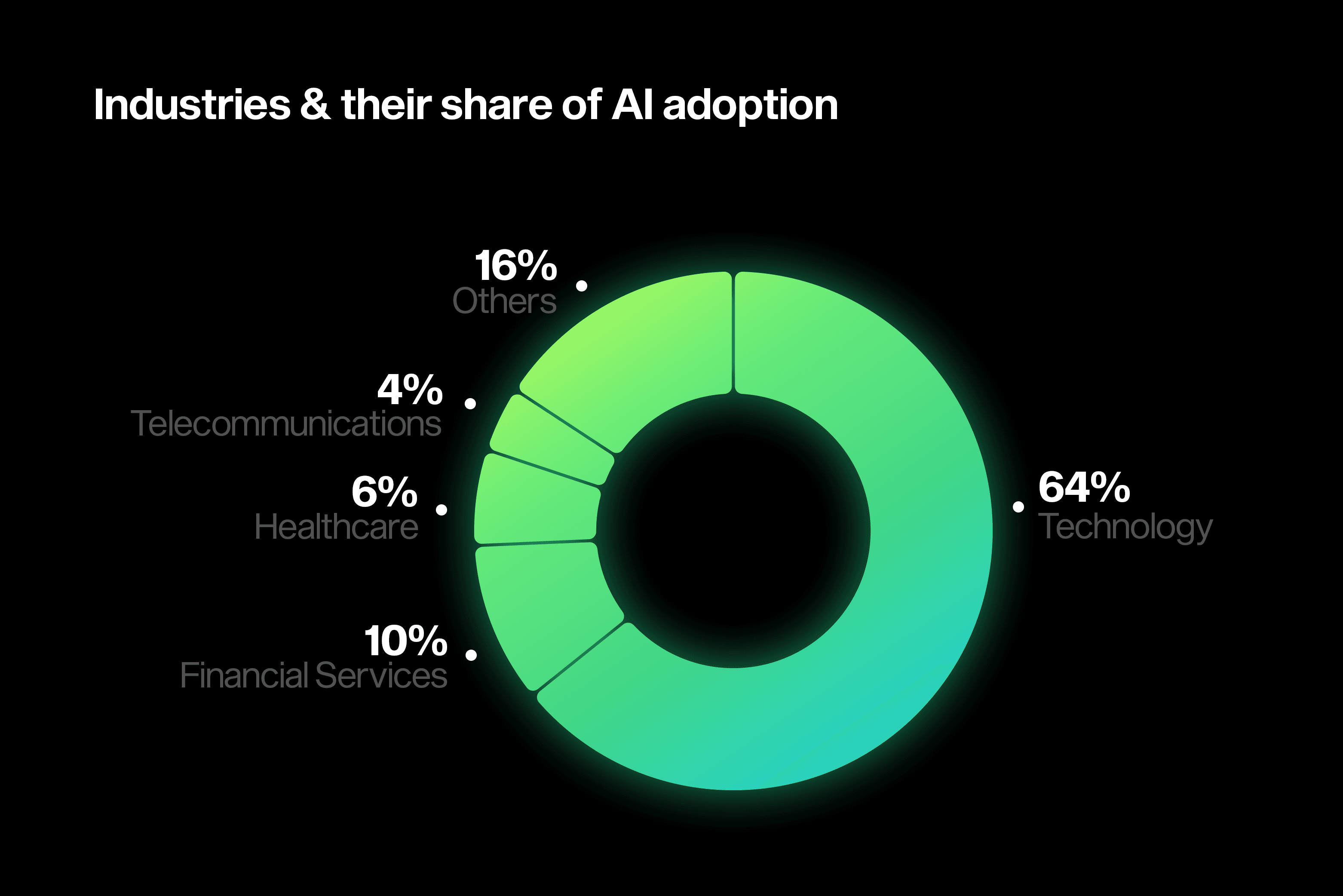
2. The Human Perception Bias
A key factor that many AI evangelists overlook is human perception bias. Consider this: 47% of Americans are over 40 today.With the average life expectancy in the U.S. being 77 years, these individuals will be engaging with contact centers for another 30 years—and they will want to speak with a real person as they always have been. The dreaded “Press 1 for this, Press 2 for that” automation has long been a source of frustration for many in this group, and it’s unlikely they will warm up to chatbots and AI-driven solutions anytime soon.

In addition to stemming from age, customers have biases in terms of:
- Quicker resolution
- Being put on hold
- Understanding concerns better
- Detailed explanations
There are pretty interesting insights I came across going through a survey done by Arm Treasure Data which shows different perceptions for AI & human agents. While customers think that they’re both efficient, humans agents score big on quicker resolution, providing detailed explanations, and understanding the customer better among other factors.
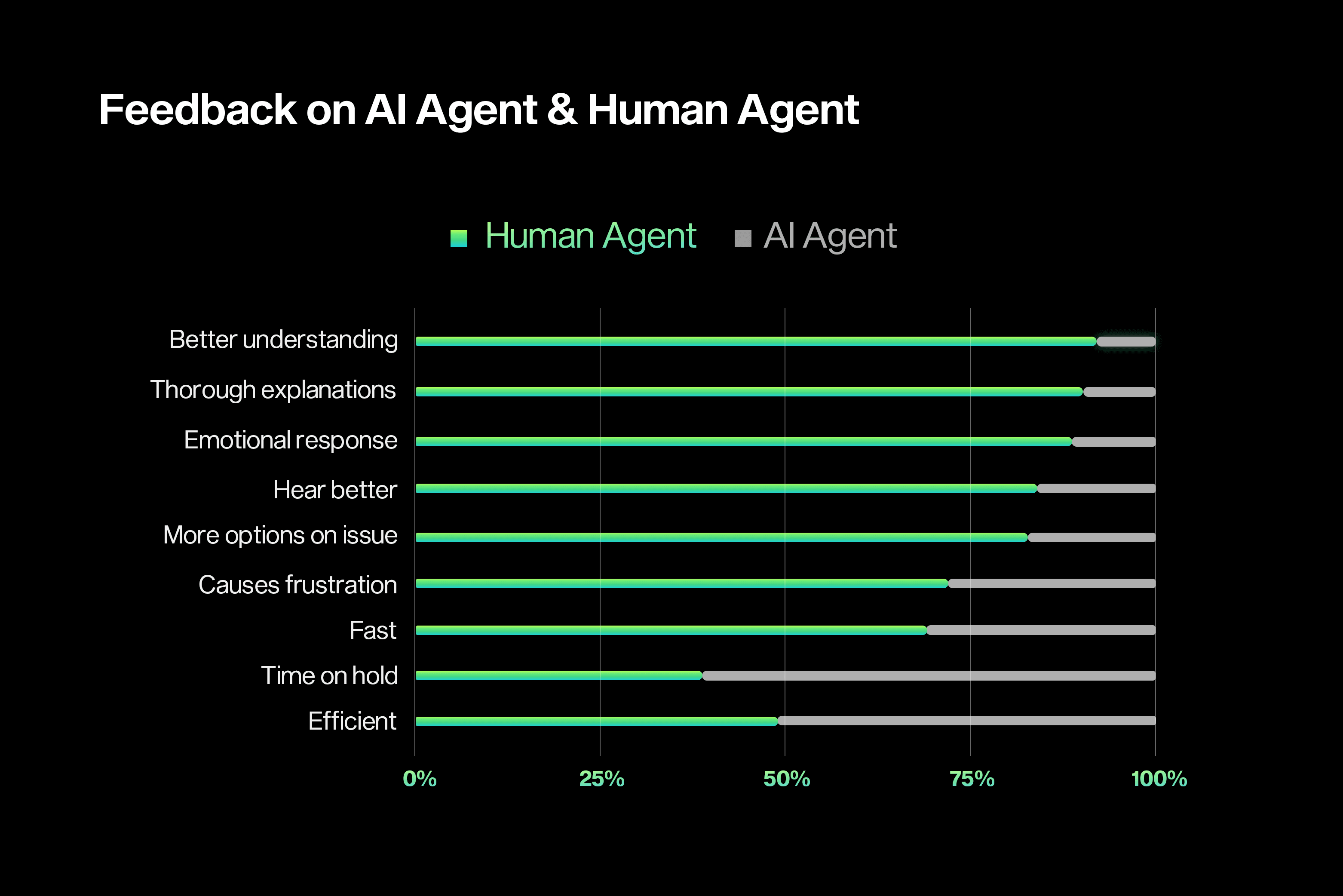
3. Legislation Related to AI
The regulatory landscape surrounding AI is another critical factor. According to a recent Gartner prediction, the European Union could introduce the "right to talk to a human" as part of its consumer protection laws by 2027. Such legislation may gain traction globally, ensuring customer service automation doesn’t overstep its bounds. Gartner has also warned that AI-driven automation could lead to scenarios where customers are put in life-threatening situations if human oversight is completely removed. With these concerns in mind, it’s clear that AI in customer support must evolve in a way that enhances, rather than eliminates, human involvement. In a survey with customer support agents on whether the end customers should know whom they are talking to - I came across interesting insights where a majority of the agents vouched for giving full disclosure to the customers on ethical reasons.
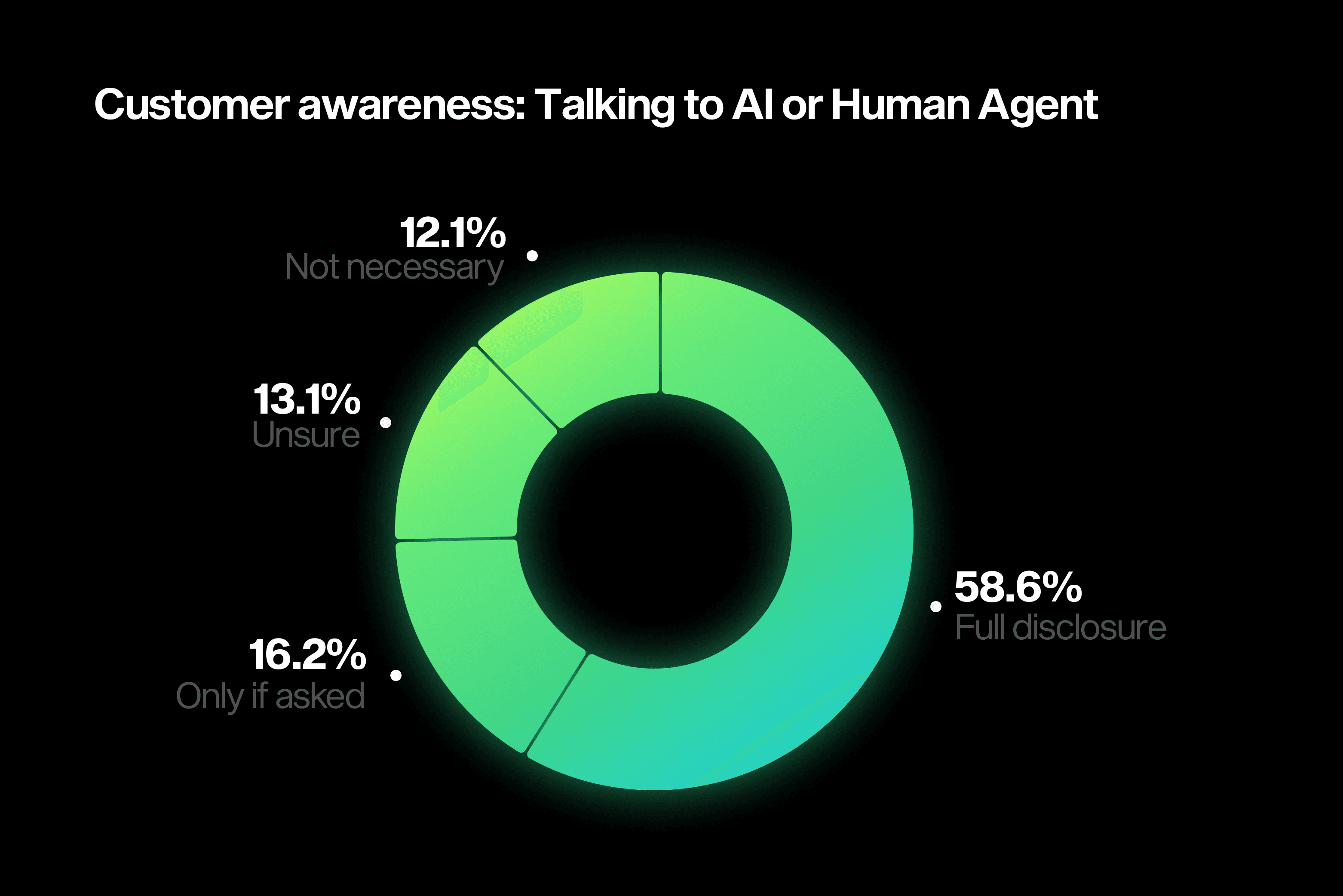
4. High AOV transactions
Beyond sensitive industries, there are sectors where human interaction is vital due to the high value of transactions. For example, while the quick commerce or food delivery sectors may see significant automation in customer service, the industries involving higher average order values (AOV) purchases, will still require a human touch. Customers spending significant sums of money would want quick response resolution and personalized assistance for understanding their needs, building rapport, and providing customized service.
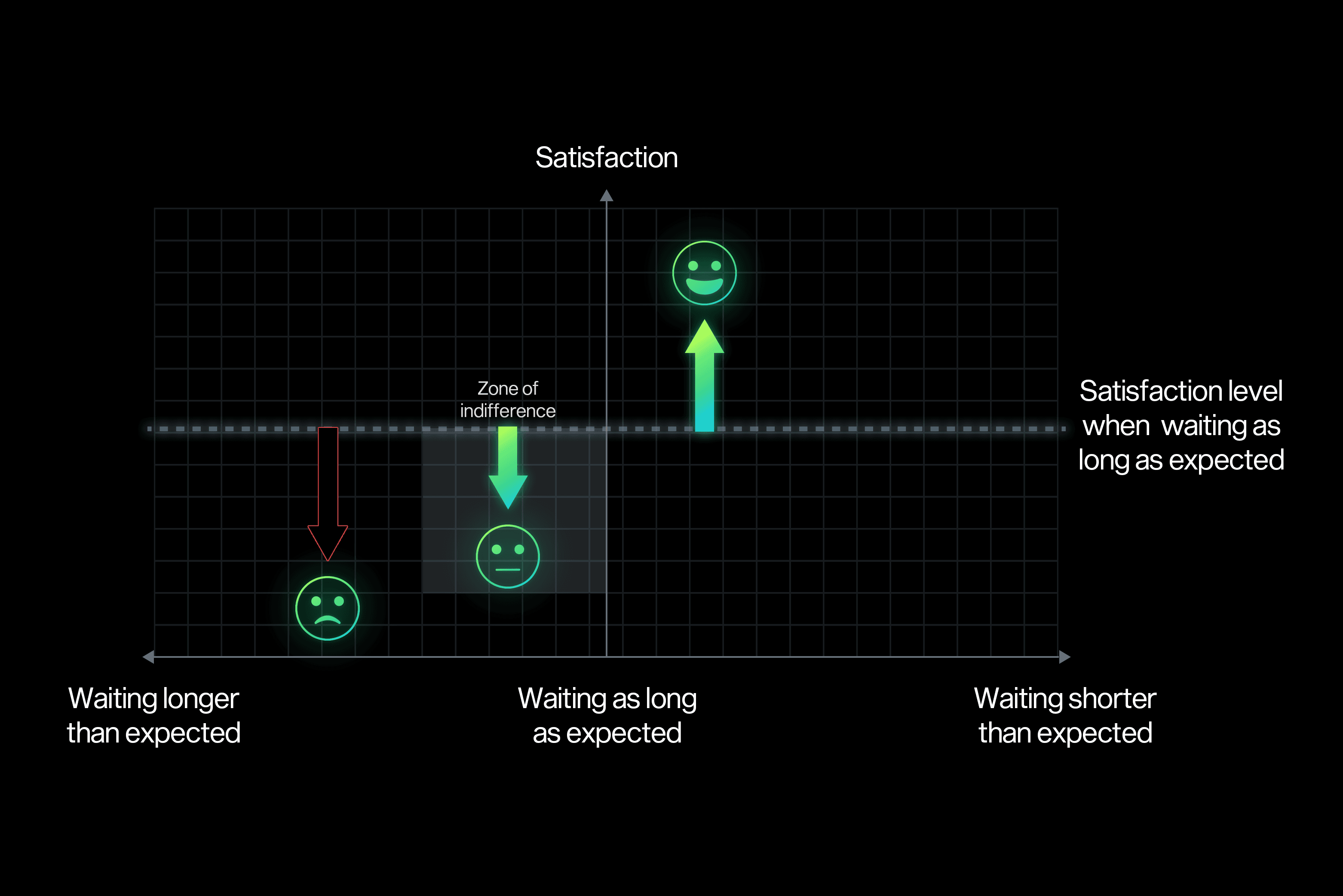
5. Complex Decision Trees Beyond L1 & L2 Support
As AI takes over routine, low-level customer interactions—think Level 1 (L1) and Level 2 (L2) support—there will still be a need for human agents to tackle more complex scenarios. For example, automating tasks like checking account balances or insurance coverage can streamline customer experiences. However, when it comes to complex decision-making, customers often need the empathy and problem-solving abilities that only humans can provide. As decision trees grow more intricate, so does the need for human intervention to interpret nuances, handle unexpected issues, and make judgment calls that AI isn’t yet capable of managing.
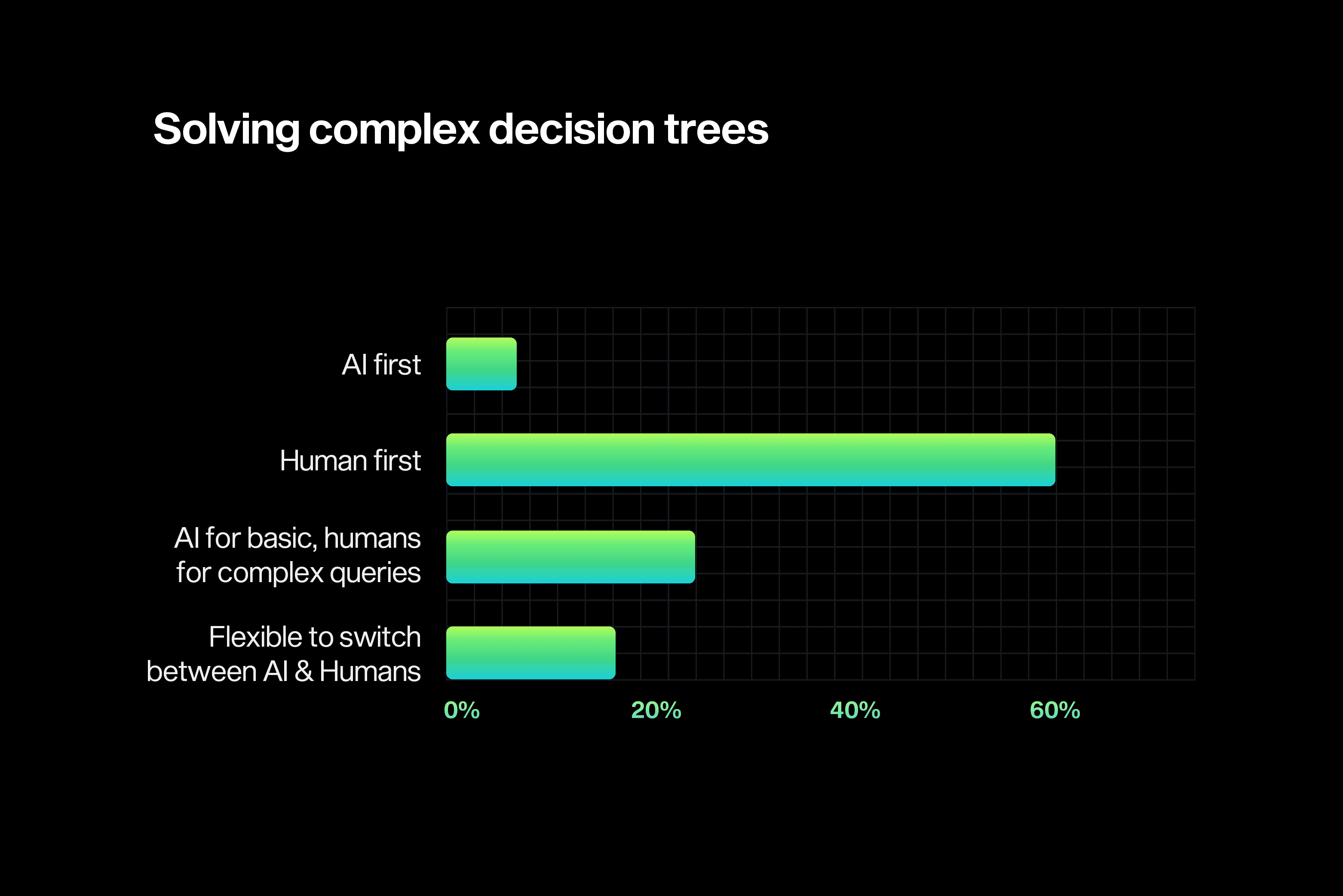
The Future: AI Augmentation, Not Replacement
While the contact center industry is undeniably changing, the future isn’t one where AI replaces humans—it’s one where AI augments human capabilities. Yes, AI will continue to handle basic queries, streamline workflows, and even handle certain customer interactions with increasing sophistication. However, there are still areas where human intuition, empathy, and decision-making are irreplaceable.
As we move forward, the companies that succeed will be the ones that strike a balance between automation and human engagement. Sensitive sectors, older generations, high-order transactions, and complex customer queries will all demand a human touch for years to come. AI is a powerful tool, but it’s not a complete solution. At least, not yet.
In this blended future, the focus remains unchanged: keeping customers happy. And that requires understanding when and where AI can step in—and when human agents are essential for delivering the empathy and expertise that no algorithm can replicate.
More Automation, More Contact Points
An important consideration is that increased automation will likely lead to more customer touchpoints. Think of the experience with Uber—by simplifying the ride-booking process, they made it so easy and accessible that people began booking more rides overall. The same principle applies to AI in customer service.
Today, 70% of customer interactions are via voice, and while this percentage might decrease to, let’s say, 30% in the future, the sheer volume of that 30% could be as significant as the current total—if not double. This means that the Total Addressable Market (TAM) for my startups Observe.AI & Sanas.AI is set to grow substantially in the coming years. As automation increases, so does the opportunity to engage with customers more frequently and meaningfully.
Conclusion: A Balanced Future
Contact centers are not dying; they are evolving. The secret to future success lies in leveraging AI to augment human interactions, not replace them. In a world where customer experience is paramount, understanding when and where AI can step in—and when human agents are essential—will be the defining factor in maintaining customer satisfaction and loyalty.
So, are contact centers dying? Not at all. They’re just getting started on a new, more balanced path where AI and human intelligence work hand in hand.












